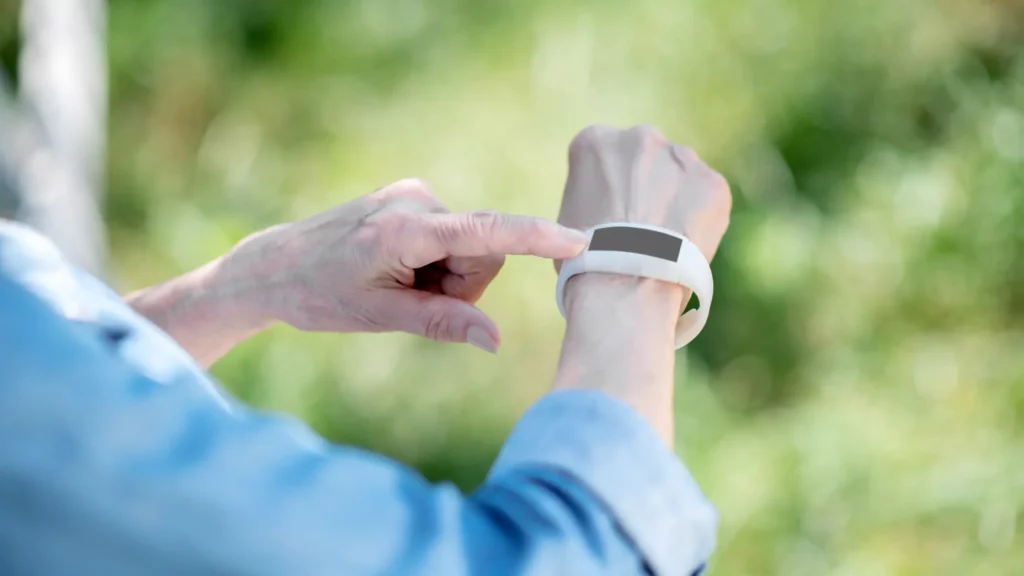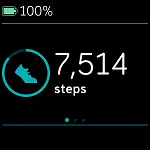Fitbit has become a household name when it comes to wearable fitness trackers, with over 29 million active users worldwide.
But how does Fitbit track your steps, and how accurate is it?
This guide will delve into the technology that powers Fitbit’s step tracking, evaluate its precision, and provide some suggestions for maximizing the usefulness of your Fitbit device.

- Fitbit uses a 3-axis accelerometer to detect movement and track steps.
- Advanced algorithms are used to filter out false positives and analyze motion patterns to identify steps.
- Fitbit also takes into account stride length and calories burned during activity.
- The accuracy of Fitbit’s step count can be affected by factors like stride length, motion patterns, and device placement on the body.
- To improve accuracy, Fitbit recommends wearing the device on the ankle or non-dominant wrist, manually entering activities that don’t involve walking, and adjusting the stride length in the app.
- Fitbit may count steps when you’re not walking due to the movement of the body, and inaccuracies can occur if the device is not properly calibrated or updated with the latest firmware.
- Fitbit’s step count is generally reliable, but it is not perfect and is not intended to diagnose or treat any health condition.

Understanding the Basics of Fitbit’s Step Tracking Technology
The core technology behind Fitbit’s step tracking is the 3-axis accelerometer, a motion sensor that detects movement in three dimensions: up and down, side to side, and front to back.
The accelerometer measures the acceleration of the device, which is then used to determine your arm movement and, therefore, your step count.

Using Algorithms to Detect Step Patterns and Eliminate False Positives
While the 3-axis accelerometer can detect movement, it is not always accurate in distinguishing between steps and other arm movements.
Fitbit uses advanced algorithms to analyze motion patterns and identify steps. This is achieved by analyzing the movement data from the 3-axis accelerometer and applying a finely-tuned step-counting algorithm.
Stride Length and Calories Burned
Fitbit also takes into account stride length, which is the distance between each step you take. Fitbit devices estimate stride length based on your height and gender, but you can also manually adjust your stride length and Calories Burned in the Fitbit app.

This information is used to estimate the distance traveled and the calories burned during your activity.
Fitbit devices track steps by monitoring your arm movement. When you walk, your arm moves in a particular way, and this motion is detected by the device’s 3-axis accelerometer.
The device then uses the step-counting algorithm to determine how many steps you have taken.

What is the level of accuracy of Fitbit’s step tracking?
Fitbit’s step tracking is generally very accurate, but it is not perfect. The accuracy of your device can be affected by several factors, including the detection threshold, stride length, motion patterns, and other movement data.
If you are pushing a stroller or shopping cart, for example, the tracker may count these movements as steps. Similarly, if you are carrying something, the device may incorrectly detect movement, leading to an inaccurate step count.

Fitbit’s step-counting algorithm is designed to filter out false positives, but it is not always perfect. Some users have reported that the tracker incorrectly counts steps while driving on a bumpy road.
Fitbit uses multi-axis sensors to detect movement, but too much movement can confuse the device, leading to an inaccurate step count. This is where the finely tuned algorithm comes in, to filter out any erroneous data.
How to Get the Most Out of Fitbit’s Step Tracking
To get the most out of your Fitbit device, you can take several steps to improve its accuracy. For example, you can wear the device on your non-dominant wrist, as this can result in a more accurate step count. You can also manually enter your steps into the Fitbit app if you are doing an activity that doesn’t involve walking.
To view your daily step log, simply tap on the Fitbit app icon, and it will take you to your account page. From there, you can see the number of steps you have taken, along with the total distance traveled.
In conclusion, Fitbit’s tracking technology is based on the 3-axis accelerometer, advanced algorithms, and a finely tuned step-counting algorithm.
While the technology is generally accurate, there are some factors that can affect its accuracy. By following the tips outlined in this article, you can get the most out of your Fitbit device and ensure that you are accurately tracking your movements and activity.
How Does an Accelerometer Work?
An accelerometer is a device that measures acceleration or changes in motion. The device consists of a mass on a spring, which moves in response to changes in motion.
The movement of the mass is measured by small electrical currents, which are then converted into a digital signal that can be interpreted by a computer or other device.

Accelerometers are used in a variety of applications, including navigation, automotive safety, and wearable devices like Fitbit.
How To Check Your Step Count On A Fitbit
To check your step count on a Fitbit device, you have a couple of options. Firstly, you can simply tap the device’s screen to see your daily step count and other statistics.
Alternatively, you can check the Fitbit app on your smartphone, where you can view your step count by tapping on the “Today” tab and scrolling down to the “Activity” section.
This allows you to see your step count for the day, as well as other fitness metrics like distance traveled and calories burned.
How Does Fitbit’s Step Counting Algorithm Work?
Fitbit’s step counting algorithm uses data from the device’s 3-axis accelerometer to detect movement. The algorithm analyzes the acceleration data to determine the user’s arm movement and, therefore, their step count.
The algorithm takes into account factors like stride length and motion patterns to filter out false positives and provide an accurate step count. Fitbit also allows users to manually adjust their stride length in the app to ensure greater accuracy.
While the algorithm is generally effective, it is not perfect and can be affected by factors like the device’s placement on the body and movement patterns.
How accurate are Fitbit devices?

Fitbit devices are generally accurate when it comes to step counting and other fitness metrics. However, the accuracy can be affected by factors like stride length, movement patterns, and the device’s placement on the body.
To ensure greater accuracy, Fitbit recommends that users wear the device on their non-dominant wrist and manually enter activities that don’t involve walking.
It’s also important to ensure that the device is properly calibrated and updated with the latest firmware.
How to Make Your Fitbit Count Your Steps More Accurately
To improve the accuracy of your Fitbit device, there are several things you can do. Firstly, you can wear the device on your non-dominant wrist, as this can result in a more accurate step count.
You can also adjust the stride length in the Fitbit app to ensure that it reflects your actual stride length.
This information is used to estimate the distance traveled and the calories burned during your activity. Finally, you can manually enter your steps into the Fitbit app if you are doing an activity that doesn’t involve walking.
FAQS
If your arms aren’t moving, does Fitbit still count your steps?
Fitbit relies on arm movement to detect steps, so if your arms aren’t moving, the device may not count those steps. However, if you are carrying the device in a pocket or bag, it may still detect steps due to the movement of the body. Fitbit is designed to filter out false positives and provide an accurate step count, but it is not always perfect.
Is Fitbit’s step count reliable?
Fitbit’s step count is generally reliable, but it is not perfect and can be affected by factors like stride length and motion patterns. While the technology behind Fitbit’s step tracking is sophisticated, it is not a medical-grade device and is not intended to diagnose or treat any health condition. To ensure greater accuracy, users can follow the tips outlined in this guide, such as wearing the device on their non-dominant wrist and manually entering activities that don’t involve walking.
Why does my Fitbit count steps when I’m not walking?
Fitbit may count steps when you’re not walking due to movement of the body, like driving on a bumpy road or pushing a stroller. The device’s step-counting algorithm is designed to filter out false positives, but it is not always perfect. For example, if you are carrying something or moving your arms in a particular way, the device may detect movement and count those movements as steps. It’s also possible that the device is not properly calibrated or updated with the latest firmware, which can lead to inaccuracies in the step count. If you are experiencing significant discrepancies in your step count, it may be worth recalibrating the device or manually entering activities that don’t involve walking.





